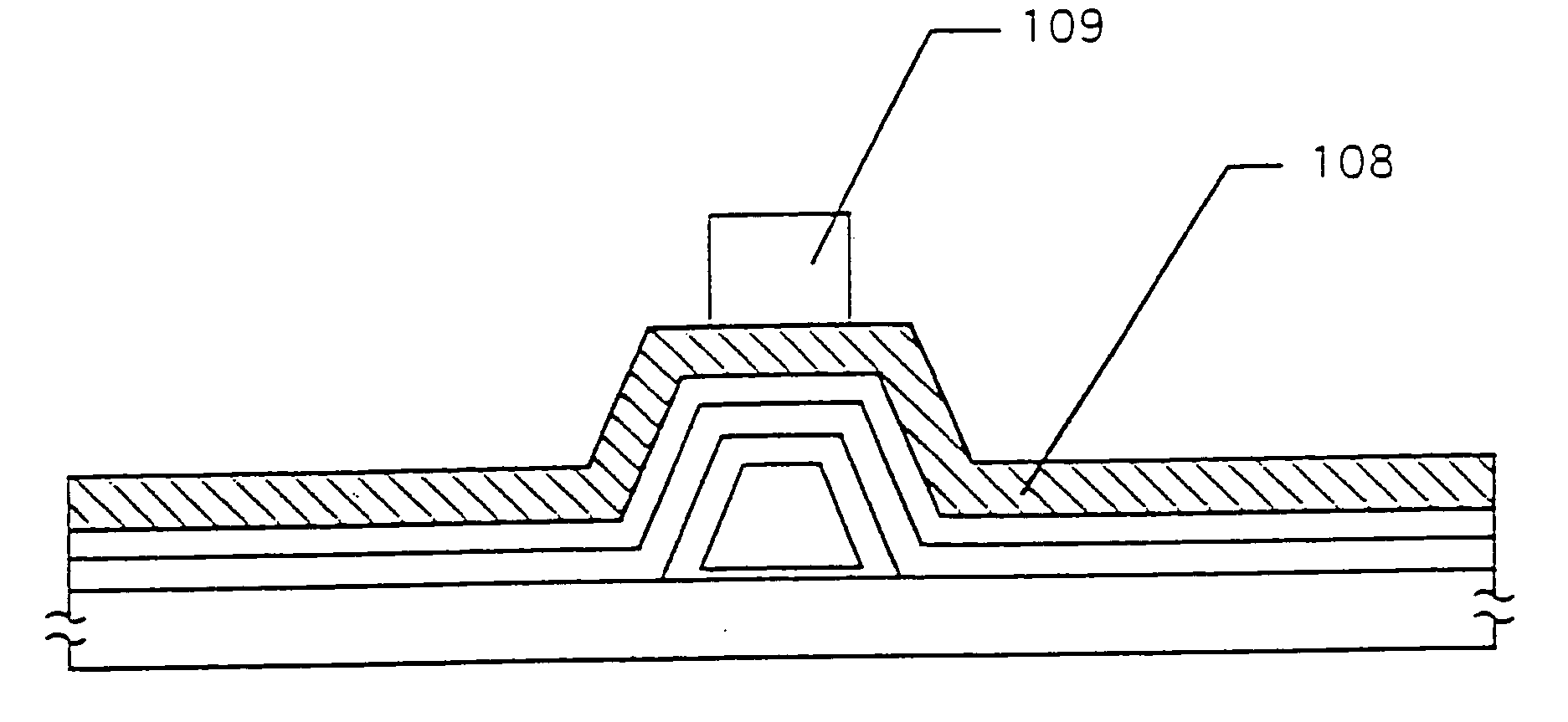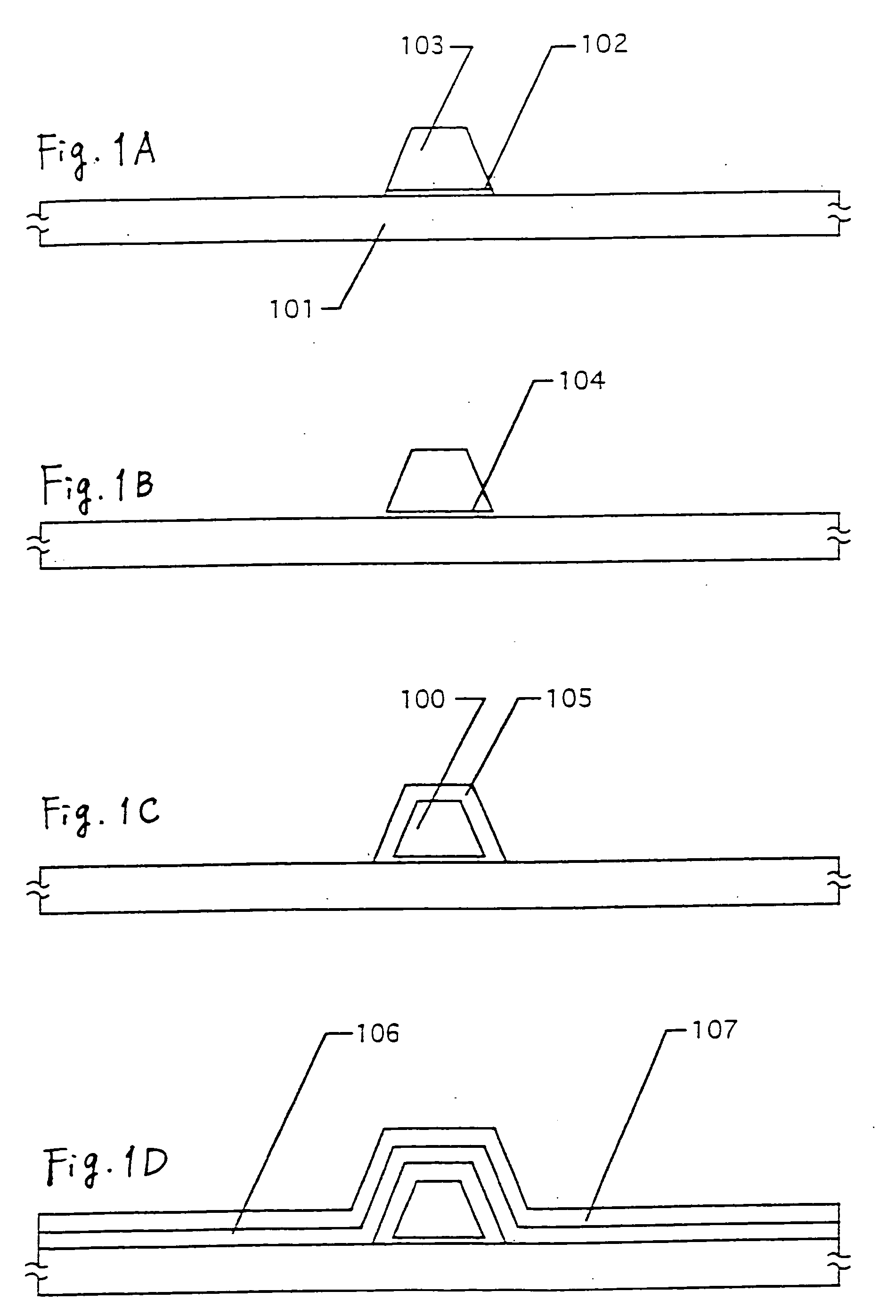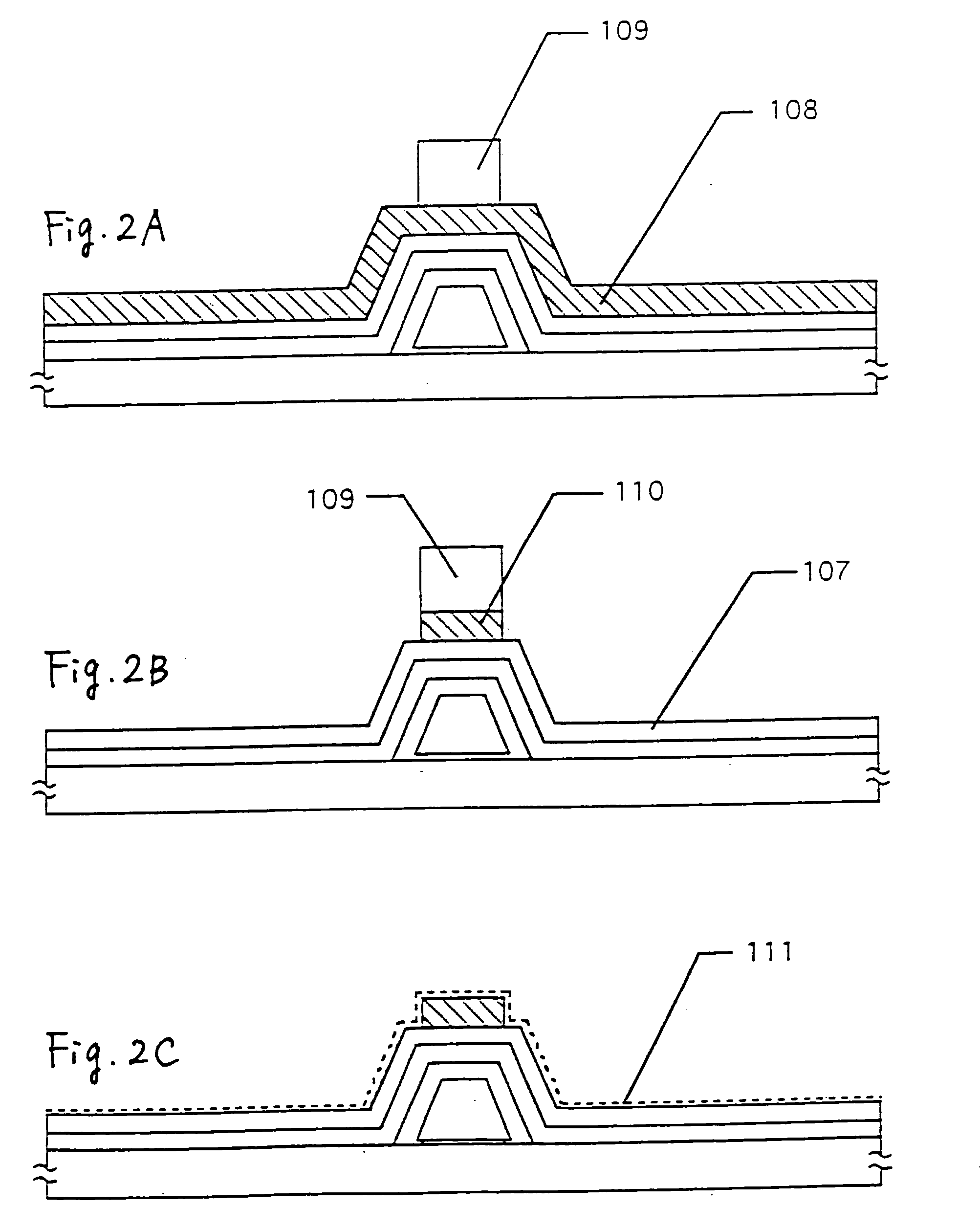Semiconductor device and method for producing it
a semiconductor and transistor technology, applied in the direction of semiconductor devices, basic electric elements, electrical appliances, etc., can solve the problems of difficult to control the influence of heat on the layers to be formed in different steps, unfavorable diffusion of gate electrode materials, and aluminum electrode materials that are problematic in that they will diffuse, etc., to achieve the effect of retarding the formation of hillocks
- Summary
- Abstract
- Description
- Claims
- Application Information
AI Technical Summary
Benefits of technology
Problems solved by technology
Method used
Image
Examples
example 1
[0093]FIG. 1(A) to FIG. 1(D), FIG. 2(A) to FIG. 2(C), and FIG. 3(A) to FIG. 3(D) are referred to, which show the process of this example. First formed is a gate electrode on the glass substrate 101.
[0094] As the substrate, also usable is a quartz substrate, or a semiconductor or metal substrate having an insulating film formed thereon. The substrate of that group will be generically referred to as a substrate having an insulating surface.
[0095] In this, first, a titanium film is formed on a glass substrate through sputtering to have a thickness of 20 nm, and then an aluminum film containing 0.2% by weight of titanium is formed on the titanium film also through sputtering to have a thickness of 400 nm.
[0096] Next, the laminate film of the titanium film and the aluminum film is patterned to obtain the laminate pattern as in FIG. 1(A). The laminate pattern is composed of the titanium film pattern 102 and the aluminum film pattern 103.
[0097] To obtain this pattern, used is dry etchi...
example 2
[0141] This is to demonstrate a modification of Example 1 in which the heat treatment in the step of FIG. 3(A) was effected in a heating furnace. In this example, a heating means of so-called RTA, exposure to strong radiations, is employed for the heat treatment.
[0142] In RTA, infrared rays having been radiated by a lamp are focused on a mirror, and applied to the layered substrate, whereby the region having exposed to the focused rays is heated at a temperature falling between 600° C. and 800° C. within a short period of time.
[0143] This heat treatment utilizes the phenomenon that the region exposed to light absorbs the light. In this, therefore, the exposed region can be heated within a short period of time, and the heat treatment of the region can be finished within such a short period of time. Concretely, the heat treatment for about 1 to 10 minutes or so produces the crystallization, as in FIG. 3(A).
[0144] If desired, the heat treatment in Example 1 may be combined with RTA,...
example 3
[0145] This is to demonstrate another modification of Example 1. In this example, a photo-mask is used in the step of forming the resist mask 109 in FIG. 2(A).
[0146] The process of this example has the disadvantage of requiring an increased number of masks, but has the advantage of employing conventional photolithography using a photo-mask, and the process is stable.
PUM
 Login to View More
Login to View More Abstract
Description
Claims
Application Information
 Login to View More
Login to View More - R&D
- Intellectual Property
- Life Sciences
- Materials
- Tech Scout
- Unparalleled Data Quality
- Higher Quality Content
- 60% Fewer Hallucinations
Browse by: Latest US Patents, China's latest patents, Technical Efficacy Thesaurus, Application Domain, Technology Topic, Popular Technical Reports.
© 2025 PatSnap. All rights reserved.Legal|Privacy policy|Modern Slavery Act Transparency Statement|Sitemap|About US| Contact US: help@patsnap.com



